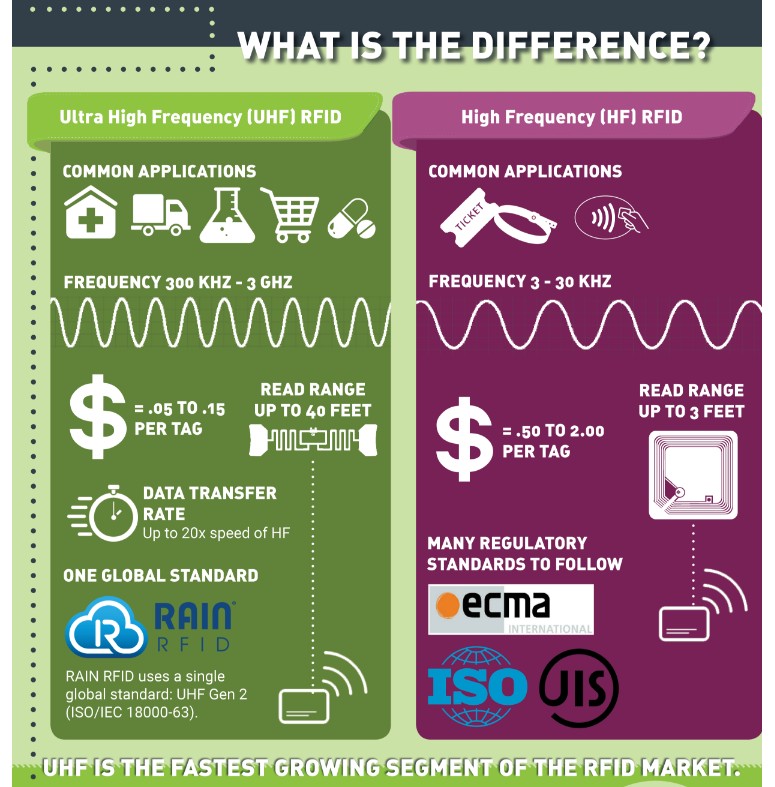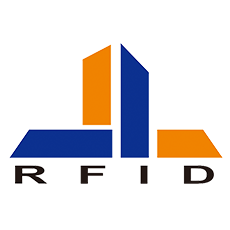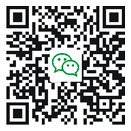RFID has the capability to automate and enhance workflows and improve operational efficiencies, specifically in healthcare and life science organizations. However, there are different types of RFID technologies and their differences affect market adoption and outcomes. As RFID technology continues to evolve at a rapid rate, it is important to consider which form of RFID is appropriate for different applications.

WHAT IS RFID?
RFID, which stands for radio frequency identification, is a form of wireless communication that uses radio waves to identify and track objects. There are a number of forms of RFID technology on the market today. The most recognizable include low frequency (LF), high frequency (HF), and ultra high frequency (UHF).
Low Frequency (LF):
Frequencies from 30 KHz to 300 KHz
Short read range, approximately 10 cm
Slower read speed
Low sensitivity to radio wave interference
Applications include access control and livestock tracking
High Frequency (HF):
Frequencies from 3 to 30 MHz
Read range between 10 cm to 1 meter (3 feet)
Moderate sensitivity to radio wave interferences
Applications include ticketing, payment, and data transfer applications
Several HF standards in place
Ultra High Frequency (UHF)
Frequencies from 300 MHz to 3 GHz
Read range up to 12 meters (40 feet)
Comply with the global, universally adopted UHF Gen2 standard (EPCglobal Gen2 ISO 18000-63)
Use the 860 to 960 MHz band
Fastest growing segment of RFID technology
Cheapest tag to manufacture
Application of UHF technology spans many markets; including retail, healthcare, life science, pharmaceutical, anti-counterfeiting, transportation, and manufacturing
UHF CREATES THE MOST VALUE
Ultra high frequency technology, referred to as RAIN RFID, is the fastest growing segment on the RFID market. The majority of new RFID projects are using UHF, as opposed to HF or LF systems. To date, UHF technology has over 20 billion connected items providing real-time visibility and data to a myriad of everyday items. UHF systems are known for generating long read ranges, up to twelve meters (forty feet), whereas HF systems carry a much shorter read range of approximately one meter (three feet). UHF allows for a faster data transfer rate, up to 20 times the range and speed of HF systems. This enables quicker transaction capture times and faster data processing.
As UHF solidifies its position as the global standard and preferred RFID technology across vertical markets, tag prices continue to drop. In 2017, UHF RFID tags cost approximately $.05 to $.15 per tag, whereas HF tags range from $.50 to $2.00 per tag.
Using a UHF RFID system eliminates the need for manual processes, thus increasing inventory visibility and automating workflows. There are countless s to incorporating UHF RFID systems into healthcare and life science markets, including:
Gain real-time visibility of inventory
Automate inventory tracking and workflows
Prevent use of expired or recalled products
Meet industry regulations such as FDA, UDI, and JHACO
Remotely monitor temperature and inventory alerts
Reduce shrinkage and prevent inventory stock-outs
Secure access to specified areas or products
Improve overall business operations















